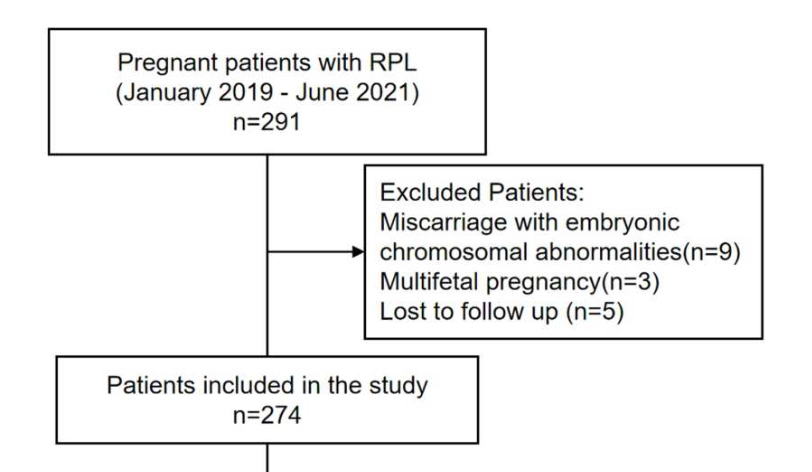Impact of subchorionic hematoma on pregnancy outcomes in women with recurrent pregnancy loss
DOI:
https://doi.org/10.17305/bjbms.2022.7705Keywords:
Subchoriconic hematoma, recurrent pregnancy loss, pregnancy outcomes, aspirin, live birth rateAbstract
We conducted a retrospective cohort study with the aim of investigating the relationship between subchorionic hematoma (SCH) and pregnancy outcomes in women with recurrent pregnancy loss (RPL). We reviewed all RPL patients who came to the Fourth Hospital of Shijiazhuang from January 2019 to June 2021. Two groups were divided according to the presence or absence of SCH. Live birth rate was considered as the primary outcome. Secondary outcomes included adverse pregnancy outcomes and complications. Univariable and multivariable analyses were conducted. Of 274 RPL women included in the final analysis, 49 (17.9%) had SCH. The occurrence of thrombophilia was significantly higher in SCH group than that in non-SCH group (38.8% vs 24.4%, P=0.041). There were no significant differences between the two groups in live birth rate, adverse pregnancy outcomes and pregnancy complications. Among women with SCH, live birth rate or SCH duration was not associated with continued use of low-dose aspirin (LDA) after the diagnosis of SCH. Our findings suggest that SCH does not reduce live birth rate in RPL women or increase the risk of adverse pregnancy outcomes or pregnancy complications. Continued use of LDA after the detection of a hematoma is unlikely to affect SCH duration or the live birth rate.
Citations
Downloads

Downloads
Additional Files
Published
Issue
Section
Categories
License
Copyright (c) 2022 Zijie Fu, Xuelei Ding, Dawei Wei, Jun Li, Rong Cang, Xiaodong Li

This work is licensed under a Creative Commons Attribution 4.0 International License.
How to Cite
Accepted 2022-08-09
Published 2023-01-06









